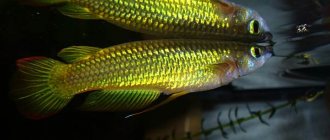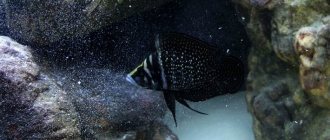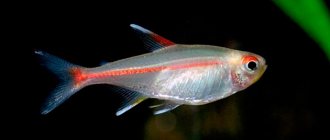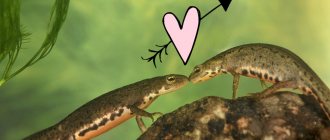Starfish (Asteroidea) is one of the largest, most diverse and specific groups. There are about 1,600 species distributed throughout the world's oceans. All species are grouped into seven orders: Brisingida, Forcipulatida, Notomyotida, Paxillosida, Spinulosida, Valvatida and Velatida. Like other echinoderms, starfish are important members of many benthic marine communities. They can be voracious predators, having a significant impact on community structure. Most species are generalist predators.
Origin of the species and description
Photo: Starfish
The earliest sea stars appeared in the Ordovician period. At least two major faunal transitions occurred in Asteroidea concurrently with major extinction events: in the Late Devonian and the Late Permian. It is believed that the species emerged and diversified very quickly (over about 60 million years) during the Jurassic period. The relationships between Paleozoic sea stars, and between Paleozoic species and living sea stars, are difficult to determine due to the limited number of fossils.
Video: Starfish
Asteroid fossils are rare because:
- skeletal elements quickly disintegrate after the death of animals;
- there are large body cavities, which collapse with damage to organs, which leads to deformation of the shape;
- starfish live on hard substrates that do not support the formation of fossils.
Fossil evidence has helped to understand the evolution of starfish in both Paleozoic and post-Paleozoic groups. The diversity of life habits of Paleozoic stars was very similar to what we see today in modern species. Research into the evolutionary relationships of starfish began in the late 1980s. These analyzes (using both morphological and molecular data) have led to conflicting hypotheses for the animal's phylogeny. The results continue to be revised because the results are controversial.
Due to their symmetrical aesthetic shape, starfish play an important role in design literature, legends and popular culture. They are sometimes collected as souvenirs, used in design or as logos, and in some cultures, despite their toxicity, the animal is eaten.
Appearance and features
Photo: What a starfish looks like
With the exception of a few species that live in brackish water, starfish are benthic organisms found in marine environments. The diameter of these marine creatures can vary from less than 2 cm to more than one meter, although most are between 12 and 24 cm. The rays emerge from the body from a central disk and their length can vary. Starfish move in a bidirectional manner, with certain arm-like arms acting as the front of the animal. The internal skeleton consists of calcareous bones.
Interesting fact: Most species have 5 rays. Some have six or seven rays, while others have 10-15. The Antarctic Labidiaster annulatus can have more than fifty. Most starfish can regenerate damaged parts or lost rays.
The water vascular system opens on the madrepore plate (a hole perforated in the central part of the animal) and leads to a stone channel consisting of skeletal deposits. The stone channel is attached to a ring channel, which leads to each of five (or more) radial channels. The sacs on the annular canal regulate the water-vascular system. Each radial channel ends in an end tube foot, which performs a sensory function.
Each radial channel has a series of lateral channels ending at the base of the tube. Each tube leg consists of an ampoule, a podium and a regular suction cup. The surface of the oral cavity is located under the central disc. The circulatory system parallels the aqueous vascular system and likely distributes nutrients from the digestive tract. The hemal channels extend to the gonads. The larvae of the species are bilaterally symmetrical, while the adults are radially symmetrical.
Description of the bottom inhabitants of the ocean
Starfish are representatives of the animal kingdom. They first appeared 450 million years ago. These echinoderms do not take root in desalinated water, therefore they are not found in the Azov Sea, the freshest sea, or the Caspian Sea, which in some places has retained the freshness of the ancient Pontic Sea.
A distinctive feature of animals is their shape. The central part is presented in the form of a disk, from which five rays or “arms” extend, mistakenly taken for tentacles. The number of arms may be greater depending on the species. The rays are not the same, they can be thin or thick, long or short. Each of them is adjacent to a part of the disk that protrudes above the plane of the body like a pillow.
The variety of surfaces and colors of the stars is impressive. Their skin can be smooth or spiked, silky or rough. The inhabitants of the deep are distinguished by their faded colors.
Instead of a skeleton there are connecting limestone plates. Sometimes they appear as lumps, and the star seems prickly.
The surface of animals is covered with small “tweezers” - pedicellariae. Thanks to them, the surface of the skin is cleaned of impurities.
The muscular system of stars is poorly developed, but there is another one - ambulacral. It is presented in the form of channels through which water is driven. Thanks to the pressure of the water flow, the star moves, parts of its body bend. Part of the system is the ambulacral legs. With their help, the animal is able to move vertically, take the shape of a dome, and retrieve prey from tightly closed shell valves.
There are many small pincers on the starfish's body.
Interesting structural features
Having learned the structure of stars, you can lift the veil of secrecy about the life of these amazing sea creatures:
- One of the unique features is the ability to regenerate. Moreover, the possibility of restoration is so strong that even if the star is cut into several parts, it will eventually return to its original shape and size. The only condition is the integrity of at least one of the rays and the adjacent disk. Sometimes there are individuals whose rays are forked at the end. This means that the animal once had a longitudinal injury to the limb. Young echinoderms living in tropical waters exhibit the best ability to recover.
- Sea stars do not have a brain, but instead have a series of interconnected cells. https://www.youtube.com/embed/HF1ybDylwnI
- The sense organs are very poorly developed. The eyes are located at the ends of the rays, but the number of eyes is not an indicator of good vision. Animals distinguish only between darkness and light. The sense of smell in different species consists of the ability to sense certain chemical compounds, but the sense of touch is well developed. The star quickly gets rid of impurities on the skin, firmly probes the road and can identify who is in front of it - potential food or danger. Even a light touch will make her instantly go deeper.
- Stars do not have gills; they breathe oxygen dissolved in water.
- There is no blood, instead sea water circulates through the body. The “pump” is the heart, which beats at a frequency of 5-7 beats per minute.
- Echinoderms are not only five-pointed, but can also have up to 50 rays.
- The maximum life expectancy reaches 35 years, and the average is 20 years.
A starfish lives in the ocean for 20-30 years
. In total, there are about 1,600 species of starfish. Warm tropical waters are famous for the greatest species diversity. There are 150 species of these marine inhabitants off the coast of Russia; in the Far East - about 100; 40 species have adapted to the harsh conditions of the northern seas. The majority of starfish inhabit the Pacific Ocean.
Most individuals are harmless, but some starfish are poisonous. The most dangerous for divers and swimmers is the acanthaster (crown of thorns). Its poisonous protruding vertebrae do not kill, but leave severe painful burns.
The excellent survival rate of animals is due to the peculiarities of their nutrition and reproduction.
Digestive system
The structure of the digestive organs deserves special attention. In voracious echinoderms, the stomach consists of two sections, one of which ends in a rounded opening - the mouth. It is located at the bottom in the very center of the animal’s body, and on the back side, on the back, you can find a barely noticeable anus. Sometimes it becomes completely overgrown, and then the by-products of digestion come out through the mouth.
The stomach occupies almost the entire body cavity. Its processes partially fill the “arms”. They contain reserves of nutrients. They are necessary to maintain vital functions during the breeding season.
Most of the sea star's body is the stomach.
Where does the starfish live?
Photo: Starfish in the sea
Stars are found in all the oceans of the world. They, like all echinoderms, maintain an internal delicate electrolyte balance that is in equilibrium with sea water, which makes it impossible for them to live in a freshwater habitat. Habitats include tropical coral reefs, tide pools, sand and mud in kelp, rocky shores and the deep sea floor, down to at least 6000 m depth. A wide variety of species are found in coastal areas.
Starfish have confidently conquered the deep spaces of such oceans as:
- Atlantic;
- Indian;
- Quiet;
- Northern;
- Southern, which was allocated in 2000 by the International Hydrographic Organization.
In addition, starfish are found in the Aral, Caspian, and Dead Seas. These are bottom-dwelling animals that move by crawling on ambulacral legs equipped with suction cups. They live everywhere to a depth of 8.5 km. Starfish can damage coral reefs and be a problem for commercial oysters. Starfish are key members of marine communities. Their relatively large size, varied diet, and ability to adapt to different environments make these animals ecologically important.
What to do with the organisms
Here's what you can do to identify strange things that are appearing in your aquarium:
- Buy good books on invertebrate identification for your saltwater reference library.
- See Marine Invertebrate Database and profile information and online galleries.
- If you have a personal website about saltwater, create something like “Can you help identify this?” page. You can display photos here and allow visitors to leave comments or email you about them.
- Post a message on the Saltwater Aquariums Community Forum asking for help with identification. If possible, include a good clarity photo or provide a link to a web page you may have created as described above.
- Tip for sending photos by email: When you send a photo to another aquarist asking for help identifying something, be kind. Submit only an image that is a reasonable size and clear enough to indicate what you want to identify, including a “short” description.
- Contact your local aquarium store to see if they can help identify the organisms, especially if it is the store where you purchased the live rock, as they may have seen the organisms before.
If you can't determine what you have, you have two options:
- Leave it alone and see what happens.
- Remove it if you are concerned that it may harm your aquarium.
What does a starfish eat?
Photo: Starfish on the beach
These sea creatures are mainly scavengers and carnivores. In many areas they are high-level predators. They feed by grabbing prey, then inverting their stomach and secreting primary enzymes onto it. Digestive juices destroy the tissues of the prey, which are then absorbed by the starfish.
Their diet consists of slow-moving prey, including:
- gastropods;
- microalgae;
- bivalves;
- barnacles;
- polychaetes or polychaete worms;
- other invertebrates.
Some starfish eat plankton and organic detritus, which adheres to the mucus on the surface of the body and is carried by cilia into the mouth. Several species use their pedicellariae to capture prey and may even feed on fish. The crown of thorns is a species that consumes coral polyps, while other species consume decaying organic matter plus feces. It has been observed that various species are able to consume nutritional substances from the surrounding water, and this may constitute a significant part of their diet.
Interesting fact: Like brittle stars, starfish are able to protect from extinction a small population of elasmobranch mollusks, which are their main food. The larvae of the mollusks are extremely small and helpless, so the starfish starve for 1 - 2 months until the mollusks grow.
The pink starfish, native to America's West Coast, uses a set of specialized tube feet to dig deep into soft substrates to forage for shellfish. Having grabbed the shellfish, the star slowly opens the victim's shell, wearing out its adductor muscle, and then places its inverted stomach closer to the crack to digest the soft tissue. The distance between the valves may be only a fraction of a millimeter wide to allow the stomach to penetrate.
Feeding methods of these cunning hunters
When you see a starfish, you get the misleading impression that these cute creatures are absolutely harmless. In fact, they are predators, and they always want to eat. Echinoderms are so voracious that they can covet prey that is larger than them. To capture the victim, they turn their elastic stomach outward and wrap it around the victim. To prevent the prey from leaving, hands are used - rays that reliably fix the food. The stomach secretes digestive enzymes and the food slowly dissolves.
Since the star moves slowly, its victims are the most motionless, clumsy aquatic inhabitants. These are oysters, clams, sea urchins or small fish that have swum up. The hard shell of mollusks is not a barrier for animals. Their stomach can penetrate a slit as small as 0.1 mm. It then envelops and dissolves the victim's soft tissue. The duration of the meal is up to 8 hours.
The passion of stars for eating oysters is a serious problem for industries involved in growing the seafood delicacy. To preserve oysters, echinoderms are caught.
Sometimes greed for food negatively affects the lifespan of stars. There is a known case of the death of the star Luidia due to the ingestion of a large sea urchin. After the meal, the huntress was unable to remove the remains of the victim.
Consumption by humans
Starfish have not found worthy use in cooking. The reason is the toxicity of marine life. The result of cooking most often is not pleasure, but poisoning. However, in Russia there are skilled chefs who have adopted the experience of their Asian colleagues and offer to try pieces of starfish cooked with ginseng roots, takua, tanguy. Mushrooms, wolf berries, rose hips, chicken broth, and rice wine are added to the sea creatures.
Starfish can be eaten, but this must be done with caution
These exotic animals are considered conditionally edible products, so eating starfish without knowing all the nuances of their preparation is not recommended.
Features of character and lifestyle
Photo: Starfish
When moving, starfish use their system of liquid vessels. The animal has no muscles. Internal contractions occur with the help of water that is under pressure in the vascular system of the body. Tubular “feet” within the epithelium of the aqueous vascular system move water, which is drawn through the pores and mixed into the limbs through internal channels. The ends of the tubular “legs” have suction cups that stick to the substrate. Starfish that live on soft substrates have pointed "feet" (rather than suckers) to move around.
A non-centralized nervous system allows echinoderms to sense the environment from all sides. Sensory cells on the epidermis sense light, contact, chemicals and water flows. A higher density of sensory cells is found in the legs of the tube and along the edges of the feeding channel. Red pigmented eyespots are found at the end of each ray. They function as photoreceptors and are clusters of pigmented cup ocelli.
Interesting fact: Starfish are very beautiful in appearance while they are in the water element. When removed from the liquid, they die and lose their colors, becoming gray calcareous skeletons.
Adult pheromones can attract larvae, which tend to settle near the adults. Metamorphosis in some species is triggered by adult pheromones. Many starfish have rough eyes at the ends of their rays, which possess multiple lenses. All lenses can create a single pixel of image, allowing the creature to see.
Social structure and reproduction
Photo: Little starfish
Starfish can reproduce sexually or asexually. Males and females are indistinguishable from each other. They reproduce sexually by releasing sperm or eggs into the water. After fertilization, these eggs develop into free-moving larvae that gradually settle to the ocean floor. Starfish also reproduce by asexual regeneration. The starfish can regenerate not only its rays, but almost its entire body.
Starfish are deuterostomes. Fertilized eggs develop into bilaterally symmetrical planktonic larvae, which have tripartite paired celiomas. The embryonic structures have specific fates as symmetrical larvae developing into radially symmetrical adults. Adult pheromones can attract larvae, which tend to settle near the adults. Metamorphosis in some species is triggered by adult pheromones. After settlement, the larvae go through a sessile stage and gradually develop into adults.
In sexual reproduction, sea stars mostly have separate sexes, but some are hermaphroditic. They usually have two gonads in each arm and a gonopore that opens to the surface of the mouth. Gonopores are usually found at the base of each arm. Most stars are free to release sperm and eggs into the water. Several hermaphroditic species give birth to their young. Spawning occurs mainly at night. Although there is typically no parental investment after fertilization, some hermaphrodite species hatch their eggs on their own.
The water in the aquarium is colored, what can I do??
Laniakea
You can't throw starfish into an aquarium! in no case! the water will still have to be changed, starfish decompose in the water, unless, of course, it is some kind of plastic, in general, the aquarium will still need to be washed, did you boil these shells before throwing them into the water?
Silver Shadow
Change the water. Half an hour ago I launched almost exactly the same star, from a cheap Chinese set of shells, but first I decided to wash it - and my hands, the aquarium stand, and the bathtub became stained. After which I decided not to put it in the aquas. I recommend that you pour out this water, buy a water conditioner, dilute it in tap water according to the instructions and refill the aquarium after washing.
Natural enemies of starfish
Photo: What a starfish looks like
The planktonic larval stage of sea stars is the most vulnerable to predators. Their first line of defense is saponins, which are found in the body walls and have an unpleasant taste. Some sea stars, such as the scalloped starfish (Astropecten polyacanthus), include powerful toxins such as tetrodotoxin in their chemical arsenal, and the star's mucous system can secrete large amounts of repellent mucus.
Sea fish can be hunted by:
- newts;
- sea anemones;
- other types of starfish;
- crabs;
- seagulls;
- fish;
- sea otters.
These sea creatures also have a kind of “body armor” in the form of hard plates and spikes. Starfish are protected from predators by sharp spines, toxins, and bright warning colors. Some species protect their vulnerable ray tips by lining their ambulacral grooves with spines that tightly cover their limbs.
Some species occasionally suffer from a wasting disease caused by the presence of Vibrio bacteria, but a more common wasting disease that causes mass deaths among starfish is densovirus.
Interesting fact: High temperatures have a detrimental effect on starfish. Experiments have shown a decrease in feeding and growth rates when body temperature rises above 23°C. Death can occur if their temperature reaches 30°C.
These invertebrates have the unique ability to absorb seawater to keep them cool when they are exposed to sunlight from a falling tide. Its rays also absorb heat to protect the central disc and vital organs such as the stomach.
What danger does starfish face in the ocean?
For the stars, no one in the underwater world poses a serious threat. Predators avoid them because of their sharp spines and the risk of poisoning. Only occasionally can you see an echinoderm becoming a victim of a seagull or sea beaver (sea otter).
The life of stars is “poisoned” by small parasites. Polychaete worms, shrimp and mollusks try to attach to the upper part of the animal, damaging the cover. The slightest discomfort forces echinoderms to act: they find the parasite and throw it off with the help of rays.
Sea stars are vulnerable to small parasites
Sometimes "neighborhood" is useful. In nature, there is a symbiosis of the star - astropectene and polychaete worms, echinaster and ctenophores. Worms attach to the lower surface of the animal and catch food debris, and ctenophores like to settle on top and clean the star from silt and algae.
One of the main enemies of echinoderms is humans, but the destruction of stars sometimes becomes a necessary measure. There is a known case when, off the coast of Australia, starfish called “crown of thorns”, which have large poisonous spines, almost destroyed the Great Barrier Reef.
This is the longest reef in the world, consisting of 2900 individual reefs, 71 islands, and stretching for 3 thousand km. In order to preserve the unique ecosystem, it was decided to destroy the stars. Chopping the predators into several parts had the opposite effect; parts of the animal regenerated. Then the divers began to collect echinoderms with picks and destroy them by dousing them with boiling water or injecting formaldehyde.











